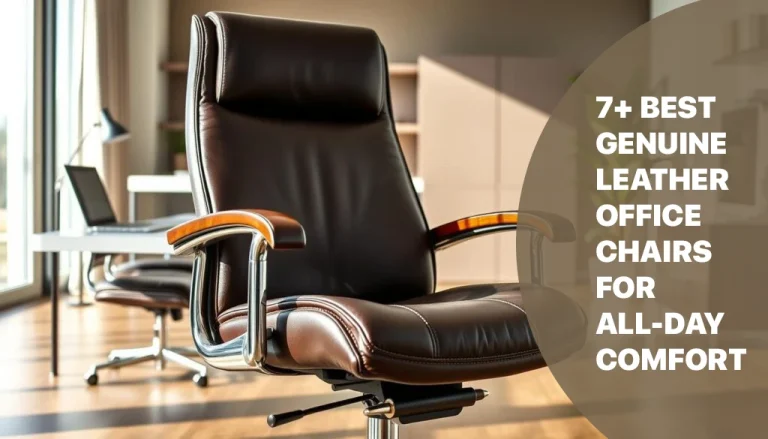An office chair is one of the most feasible investments because it helps guide your body to a proper posture and prevents back/neck/hip pain. It also reduces pressure on your buttocks, so a sinking one may cause discomfort due to several health problems. So how to fix a sinking office chair?
Why Does Your Office Chair Sink?
An office chair is equipped with a pneumatic cylinder (or gas cylinder in some ergonomic ones), and a seal inside controls the seat’s height through force and pressure. Over time, it is prone to corrosion, rusting, or other damage and no longer works properly.
This will wreak havoc on the cylinder’s operation, so the chair is not stable enough to resist much pressure placed on it, and that’s why it starts to sink.
If you use the failing one, you might have many health issues, such as neck pain or backache, because your sitting positions are incorrect. Pay attention to its quality by purchasing products from reliable manufacturers like Steelcase or Haworth.
How To Fix A Sinking Office Chair?
Repairing a sinking chair is pretty simple, including two different methods: using the PVC pipe technique or relying on duct tape and a hose clamp. Each approach contains smaller steps that are thoroughly elaborated below.
Using The PVC Pipe Method
- Step 1: Pinpoint the location of a metal cylinder surrounded by a plastic cover. Then, take some measurements to gain the desired length suitable for your height. You can use a specialized diameter to do so.
- Step 2: Find or purchase a PVC pipe somewhere. It is advisable to reach one slightly wider than a cylinder’s diameter before cutting it to the measured length.
- Step 3: Continue to cut one side of the PVC lengthwise with the help of a saw or scissors.
- Step 4: This stage is the most important, requiring you to apply the pipe in a way that it can fit the metal cylinder perfectly. If you find it quite loose, cutting the line into smaller sections is highly recommended to diminish the resistance.
- Step 5: Test your chair by sitting on it and ensure you are satisfied with the height. If not, you can add more pipe sections to increase the size or remove some to decrease it.
Read more: How to Fix A Broken Office Chair?
Using The Duct Tape And Hose Clamp Method
- Step 1: Locate the pneumatic cylinder and uncover it by removing the tube completely or sliding it aside. Remember to re-attach the wheels before start to the procedure.
- Step 2: Set your chair to the proper height to align with your knees when standing. Don’t worry if you cannot find the optimum size because you can alter it later.
- Step 3: Go to the hardware store and pick a hose clamp to stabilize your chair.
- Step 4: Use duct tape and wrap it around the area where you hold the hose clamp. You can also rely on heavy-duty sandpaper to smooth the metal surface, increasing the tape’s hold on the cylinder.
- Step 5: Tighten the clamp as hard as possible. If the seat is still loose, you are advised to pull it more tightly by rotating the screws. Suppose this approach is futile. In this case, take out the sandpaper and roughen the surface further.
- Step 6: Test your chair by taking visual speculation. If it slides past the clamp, you’d better use a PVC pipe. You move the clamp lower or higher to modify the height.
Conclusion
After this post, you will get a satisfying answer: How to fix a sinking office chair? You can apply the PVC pipe method or undertake an approach requiring the hose clamp and duct tape.
Opt for one that you feel most confident in and try to overcome this difficulty. If you need detailed instructions, watch the video below:
FAQ





